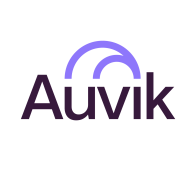

Elastic Observability and Auvik Network Management compete in the network monitoring and observability category. Auvik seems to have the upper hand with its strong network discovery and ease of deployment, which may appeal more to users looking for simplicity.
Features: Elastic Observability offers comprehensive logging, monitoring, and SIEM with a licensing model based on the number of hosts. It is suitable for large setups due to a rich feature set. Auvik Network Management shines in network discovery, auto-mapping, and alerting, combined with robust monitoring capabilities. It is praised for its remote access and configuration backup features.
Room for Improvement: Elastic Observability requires enhancements in visualization with improvements in synthetic monitoring and process metrics. Users are looking for better automation and enhanced APM capabilities. Auvik Network Management needs improvements in reporting, lacking custom reporting capabilities and integration with certain network devices. Users want enhanced map customization and integration with existing tools.
Ease of Deployment and Customer Service: Elastic Observability supports a hybrid model with robust documentation and technical support, especially for platinum-level customers. Auvik Network Management primarily deploys on Public Cloud, praised for its intuitive interface and excellent customer support.
Pricing and ROI: Elastic Observability is cost-effective due to its open-source version and affordable compared to Dynatrace and New Relic, though pricing might be a concern for smaller startups. Auvik Network Management's per-device pricing is seen as expensive but justified by its features. The pricing primarily affects larger networks due to the billing model, which might outweigh its benefits for some users.
They were knowledgeable and responded quickly with accurate and useful information.
Although the support is good, resolving time takes longer than expected, especially for major issues that require escalation.
The platform scales well and supports our organizational needs.
Elastic Observability seems to have a good scale-out capability.
What is not scalable for us is not on Elastic's side.
It is very stable, and I would rate it ten out of ten based on my interaction with it.
Elastic Observability is really stable.
We were unable to integrate Auvik with a geographical map, which limited our ability to track issues to specific buildings on campus.
Enhancements in API functionality and wider tool support for integration with PSA or RMM tools.
It lacked some capabilities when handling on-prem devices, like network observability, package flow analysis, and device performance data on the infrastructure side.
One example is the inability to monitor very old databases with the newest version.
Elastic Observability could improve asset discovery as the current requirement to push the agent is not ideal.
Auvik is pricey, and we were paying a lot for it, especially when compared to SolarWinds.
The license is reasonably priced, however, the VMs where we host the solution are extremely expensive, making the overall cost in the public cloud high.
Elastic Observability is cost-efficient and provides all features in the enterprise license without asset-based licensing.
Auvik Core's ease of use also enhanced troubleshooting speed and efficiency.
Its proactive monitoring and simplified troubleshooting have significantly impacted our efficiency in handling network management tasks.
the most valued feature of Elastic is its log analytics capabilities.
The most valuable feature is the integrated platform that allows customers to start from observability and expand into other areas like security, EDR solutions, etc.
All the features that we use, such as monitoring, dashboarding, reporting, the possibility of alerting, and the way we index the data, are important.


Auvik is a network management software that provides real-time visibility and control over network infrastructure.
It automates network mapping, monitoring, and troubleshooting, allowing IT teams to easily identify and resolve issues.
With its intuitive interface and powerful features, Auvik helps businesses optimize their network performance and ensure smooth operations.
Elastic Observability is primarily used for monitoring login events, application performance, and infrastructure, supporting significant data volumes through features like log aggregation, centralized logging, and system metric analysis.
Elastic Observability employs Elastic APM for performance and latency analysis, significantly aiding business KPIs and technical stability. It is popular among users for system and server monitoring, capacity planning, cyber security, and managing data pipelines. With the integration of Kibana, it offers robust visualization, reporting, and incident response capabilities through rapid log searches while supporting machine learning and hybrid cloud environments.
What are Elastic Observability's key features?Companies in technology, finance, healthcare, and other industries implement Elastic Observability for tailored monitoring solutions. They find its integration with existing systems useful for maintaining operation efficiency and security, particularly valuing the visualization capabilities through Kibana to monitor KPIs and improve incident response times.
We monitor all IT Infrastructure Monitoring reviews to prevent fraudulent reviews and keep review quality high. We do not post reviews by company employees or direct competitors. We validate each review for authenticity via cross-reference with LinkedIn, and personal follow-up with the reviewer when necessary.